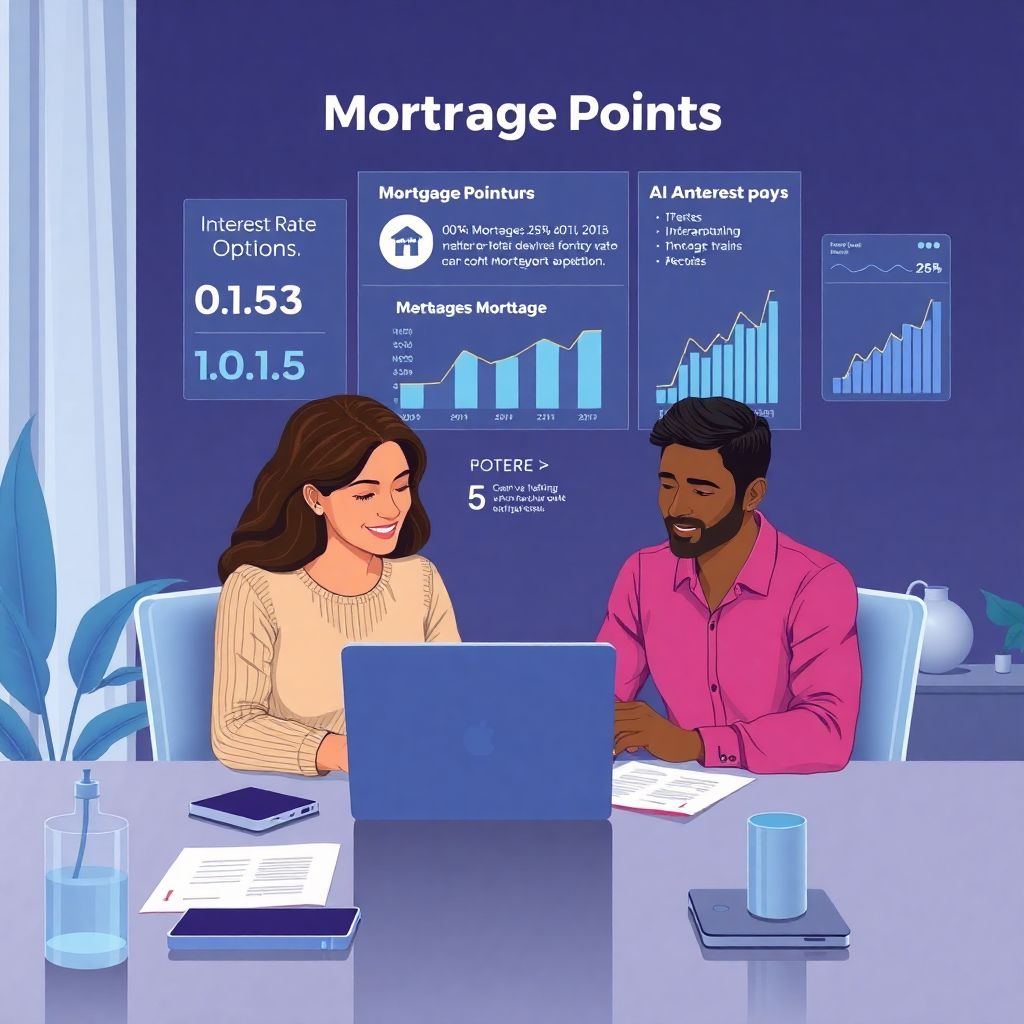Understanding Mortgage Points in 2025: A Practical Guide
What Are Mortgage Points and How Do They Work?
Mortgage points, often referred to as “discount points,” are fees paid directly to a lender at closing in exchange for a reduced interest rate on a mortgage. Think of it as prepaying some of the interest upfront to secure a lower monthly payment over the life of your loan. In most cases, one point equals 1% of your total loan amount. For example, on a $300,000 mortgage, one point would cost $3,000.
Purchasing points can be a strategic move if you plan to stay in your home for a long time, as the savings on interest can eventually outweigh the upfront cost. However, in 2025, with fluctuating rates and new digital mortgage platforms, borrowers have more tools and flexibility to optimize this decision.
Different Approaches to Using Mortgage Points
Borrowers typically follow one of three strategies when it comes to mortgage points:
1. Buy Down the Rate Aggressively – Some homeowners purchase multiple points to lower their interest rate significantly, aiming to save money in the long run.
2. Skip the Points Altogether – Others prefer a rate slightly higher without paying points, keeping their initial cash outlay low.
3. Split the Difference – A middle-ground strategy where borrowers buy one or half a point to modestly reduce the rate without a heavy upfront cost.
Each approach has pros and cons that depend largely on your financial goals and how long you plan to keep the mortgage. For instance, if you plan to refinance or sell within five years, paying for points might not be worth it.
Pros and Cons of Mortgage Points in Today’s Market
In 2025, the benefits and downsides of mortgage points are more nuanced due to recent fintech advancements and changing economic conditions.
Pros:
– Long-term Savings: Lower interest rates over the life of the loan can lead to tens of thousands of dollars saved.
– Tax Deductible: Points may be tax-deductible (consult your tax advisor).
– Customizable Options: Digital lenders now offer fractional point purchases.
Cons:
– High Upfront Cost: Points require a substantial payment at closing, which can be a barrier for first-time buyers.
– Break-Even Timing: You need to stay in the home long enough to recoup the cost of the points.
– Market Risk: If rates drop later, refinancing could make your initial point purchase less valuable.
The key is to balance short-term liquidity with long-term savings. In 2025, many borrowers use online calculators and AI-based mortgage advisors to run these numbers before deciding.
Expert Tips for Choosing the Right Strategy

If you’re considering buying mortgage points, here are five practical tips to guide your decision:
1. Know Your Break-Even Point – Calculate how many months it will take for the interest savings to cover the upfront cost.
2. Consider Your Time Horizon – If you plan to move or refinance soon, skip the points.
3. Compare Lenders – Not all lenders price points the same. Use comparison tools to shop around.
4. Watch the Market – Rates can change weekly. Lock in when rates are favorable, even if it means fewer points.
5. Align with Your Financial Plan – Ensure the upfront cost of points fits within your overall budget and emergency fund.
Digital mortgage platforms now include dynamic calculators that factor in your salary, job stability, and regional housing trends to recommend the best option.
Mortgage Point Trends Shaping 2025
The mortgage market in 2025 is experiencing several notable shifts that directly impact how buyers perceive and use points:
– AI-Powered Mortgage Advisors – Platforms like Rocket Mortgage and Better.com are integrating AI to analyze whether buying points makes sense based on personalized data.
– Fractional Points – Instead of whole points, borrowers can now purchase down to a quarter or even one-tenth of a point, offering more control.
– Flexible Buy-Back Options – Some lenders are offering “point rebates,” allowing borrowers to recover a portion of paid points if they refinance within a specific window.
– Higher Rate Volatility – With interest rate swings more common due to tech disruption and global events, timing point purchases has become more critical—and trickier.
– Socially Responsible Lending – Eco-mortgages and green home incentives often exclude point purchases to promote affordability for energy-efficient homes.
In summary, mortgage points remain a powerful tool for managing your loan costs—but only when used strategically. The 2025 landscape puts more power in the hands of the borrower, thanks to technological innovation and lender competition. Make sure to leverage all available tools, ask the right questions, and think ahead before writing that check for points.

